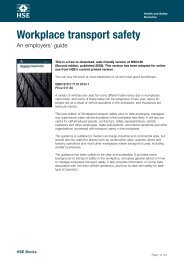Download - Arri
Download - Arri
Download - Arri
Create successful ePaper yourself
Turn your PDF publications into a flip-book with our unique Google optimized e-Paper software.
2 6 C a m e r a<br />
At first it was important to feel, sense and<br />
get acquainted with this landscape that I<br />
had never seen before. As I did so, I repeatedly<br />
wondered if it was in fact the<br />
right decision to take this technical equipment<br />
into the far north – into this white<br />
emptiness! Our ship passed a barren,<br />
fjord-dominated landscape, littered with<br />
glacier tongues. The bow appeared almost<br />
to carve the water that lay beneath<br />
and in front of us - water that seemed<br />
likely to freeze to ice at any moment, given<br />
the perilously low temperatures. Daniel<br />
unpacked the D-21 and photographed the<br />
first test shots, using the ship’s electrical<br />
network for a power supply. The SRW-1<br />
was well packed in a polystyrene-insulated<br />
aluminum box, to guarantee utmost<br />
protection against all kinds of weather<br />
conditions.<br />
We mounted the D-21 to the bow of the<br />
ship - not an easy job, I had to admit.<br />
Maneuvering the weight of the camera<br />
and Master Zoom across the wet steel<br />
deck of the swaying ship all by myself<br />
was a real challenge. Once mounted,<br />
the weight of the camera combined with<br />
the widely-spread tripod legs resulted in<br />
a balancing effect with regard to the<br />
ship’s vibrations – vibrations we could<br />
not have anticipated. The first images<br />
followed.<br />
The adventures of the following days far<br />
exceeded our imaginations and our<br />
wildest dreams. The ship was groping its<br />
way north and leaving the 81st parallel<br />
behind; a distance of less than 1,000km<br />
now separated us from the North Pole –<br />
1,000km of fog, snow and ice! We observed<br />
atmospheric lighting displays of<br />
incredible intensity - compositions of light<br />
that made us forget time and space. But<br />
we also witnessed an incident that, most<br />
likely, has not been documented in such<br />
a way before – cannibalism among<br />
polar bears.<br />
On a huge ice floe, we discovered an<br />
adult, male polar bear that had just<br />
killed another animal of the same species<br />
and was starting to devour it – a tragic<br />
sight that demonstrated the hopelessness<br />
of the polar bears and the shortage of<br />
their food. It was exactly what we were<br />
there to document.<br />
The captain rammed the ship through ice<br />
almost a meter thick and managed to get<br />
us within 200m of the cadaver. The killer<br />
polar bear escaped to a safe distance<br />
and observed us while we, in turn, did<br />
the same! In the meantime, a white fox<br />
and the very rarely seen ivory seagull<br />
were busy with the cadaver. At daybreak,<br />
the starving polar bear returned<br />
and we successfully captured incredible<br />
images.<br />
Further south we found a dead finback<br />
in a fjord – for polar bears, the equivalent<br />
of a well-stocked fridge! There, we met<br />
colleagues from the BBC who were visiting<br />
this spot to document the dead finback.<br />
Our BBC colleagues were more than a<br />
little astonished to see a D-21 in use up<br />
there in the far north. After ten surreal<br />
days in the Arctic we returned to our own<br />
world, with images and impressions we<br />
had never expected.
















